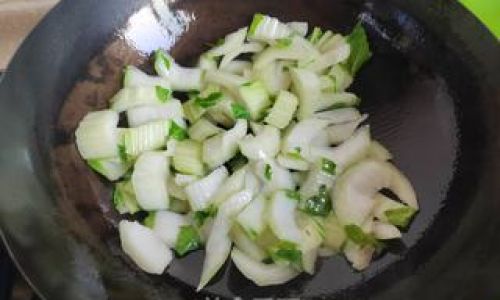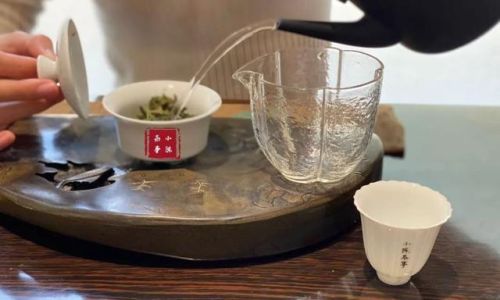The phrase “大家风范” (dàjiā fēngfàn), a Chinese expression, encapsulates the aura of dignity, wisdom, and composure exhibited by individuals of exceptional character and achievement. Rooted in Confucian philosophy and centuries of cultural evolution, this concept transcends mere social grace; it embodies a harmonious blend of intellectual depth, moral integrity, and unwavering self-possession. To understand 大家风范 is to recognize the subtle art of balancing humility with authority, tradition with innovation, and individuality with collective responsibility. This essay explores the multifaceted dimensions of this ideal, tracing its historical origins, dissecting its core attributes, and examining its relevance in contemporary society.
I. Historical and Cultural Foundations
The notion of 大家风范 emerged from China’s intellectual and aristocratic traditions, where scholars, artists, and statesmen were revered not only for their expertise but also for their ability to inspire through deportment. Confucius, the 6th-century BCE philosopher, exemplified this ethos through his teachings on li (ritual propriety) and ren (benevolence). For Confucius, a true gentleman (junzi) was defined by his moral rectitude, not by birthright. His dictum, “The gentleman is calm and at ease; the small man is fretful and ill at ease,” underscores the inner tranquility central to 大家风范.
During the Tang and Song dynasties, literati culture elevated this ideal further. Scholars like Su Shi (Su Dongpo) and Ouyang Xiu became archetypes of 大家风范 through their poetry, calligraphy, and governance. Their work reflected a synthesis of classical learning, artistic mastery, and ethical leadership—a triad that defined elite conduct. Similarly, in the Ming and Qing periods, figures such as Wang Yangming and Cao Xueqin embodied this ethos by merging philosophical inquiry with creative expression, proving that 大家风范 was as much a mental discipline as a social performance.
II. Core Attributes of 大家风范
-
Intellectual Depth and Curiosity
A hallmark of 大家风范 is the relentless pursuit of knowledge combined with the humility to acknowledge ignorance. Great masters are not repositories of facts but architects of insight, capable of synthesizing disparate ideas into coherent worldviews. The 18th-century scholar Dai Zhen, a pioneer of Han learning, exemplified this by advocating for empirical inquiry over dogma. His willingness to challenge Confucian orthodoxies while respecting its essence demonstrated how intellectual rigor could coexist with reverence for tradition.
-
Emotional Resilience and Composure
Individuals with 大家风范 remain unshaken by adversity, maintaining poise even in chaos. This trait is epitomized by the statesman-poet Wen Tianxiang, who, during the Mongol conquest of the Song dynasty, wrote his immortal Ode to the Righteous Spirit while imprisoned. His verse, “Since heaven and earth are eternal, how can a man be ashamed to die for loyalty?” reflects the stoicism and moral clarity that define true grandeur. -
Empathy and Social Responsibility
Great masters do not exist in isolation; their wisdom serves society. The 20th-century historian Chen Yinke, despite personal tragedies, dedicated his life to preserving China’s cultural heritage. His refusal to compromise academic integrity during political turmoil illustrated how 大家风范 demands courage to uphold principles, even at personal cost. -
Aesthetic Refinement
Artistic excellence is another dimension of this ideal. The calligrapher Wang Xizhi, whose Lantingji Xu (“Preface to the Poems Composed at the Orchid Pavilion”) is celebrated as the pinnacle of Chinese calligraphy, merged technical mastery with spiritual expression. His brushstrokes, fluid yet precise, mirror the balance between spontaneity and discipline inherent in 大家风范.
III. 大家风范 in Global Context
While rooted in Chinese culture, the essence of 大家风范 resonates universally. The Renaissance polymath Leonardo da Vinci, for instance, embodied similar traits through his interdisciplinary genius and relentless inquiry. His notebooks, filled with sketches of anatomy, flight, and hydrodynamics, reveal a mind as curious as it was disciplined—a parallel to the Chinese literati’s pursuit of tongren (comprehensive learning).

Similarly, the 19th-century Indian philosopher Swami Vivekananda blended spiritual depth with social engagement, advocating for education and equality while maintaining the serenity of a sage. His address at the 1893 World Parliament of Religions, where he declared, “Sisters and Brothers of America,” exemplified how 大家风范 can transcend cultural boundaries to unite humanity.
IV. 大家风范 in Modern Leadership
In an era of hyper-connectivity and fragmented attention, the qualities of 大家风范 offer a counterpoint to the chaos of modern life. Leaders like Nelson Mandela, who emerged from 27 years of imprisonment to champion reconciliation, exemplify the moral authority and emotional resilience central to this ideal. Mandela’s autobiography, Long Walk to Freedom, chronicles his journey from anger to forgiveness, demonstrating how true grandeur lies not in power but in the capacity to heal divisions.
In business, the late Steve Jobs, despite his controversies, cultivated an aura of visionary certainty. His presentations, blending minimalist design with narrative flair, mirrored the artistic refinement of 大家风范. While his leadership style was unconventional, his ability to inspire through clarity of purpose aligns with the ideal’s emphasis on intellectual and creative mastery.
V. Critiques and Contemporary Challenges
Critics argue that 大家风范 risks becoming an elitist relic, detached from the struggles of ordinary people. In a world grappling with inequality, the emphasis on refinement and composure may seem out of touch. However, proponents counter that 大家风范’s core tenets—empathy, integrity, and intellectual rigor—are precisely the antidotes to modern fragmentation.

The challenge lies in adapting this ideal to inclusive frameworks. The #MeToo movement and Black Lives Matter protests, for instance, demand that leaders embody 大家风范 not through aloofness but through active listening and humility. The South African activist Desmond Tutu, who combined moral authority with playful humor, showed how grandeur could be both dignified and approachable.
VI. Cultivating 大家风范 in Daily Life
The pursuit of 大家风范 is not confined to the elite. It begins with small acts of discipline and mindfulness:
- Cultivate Curiosity: Read widely, question assumptions, and engage with diverse perspectives.
- Practice Emotional Regulation: Meditate, reflect, and respond to conflicts with measured thought.
- Serve Others: Volunteer, mentor, or advocate for causes beyond personal gain.
- Refine Aesthetics: Appreciate art, music, and literature to nurture creativity and sensitivity.
The Japanese concept of ikigai (reason for being) and the Scandinavian principle of lagom (balance) offer cross-cultural pathways to similar ideals.
Conclusion: The Enduring Legacy of 大家风范
In an age of fleeting trends and superficial personas, 大家风范 remains a beacon of enduring excellence. It reminds us that true grandeur is not about dominance but about influence; not about flaunting power but about wielding wisdom. From Confucius to Mandela, from Wang Xizhi to da Vinci, history’s greatest figures teach us that 大家风范 is not an inherited trait but a conscious choice—a commitment to grow, to serve, and to leave the world more enlightened than we found it.

As we navigate the complexities of the 21st century, the pursuit of this ideal invites us to rise above noise and chaos, to lead with humility, and to remember that the measure of a life lies not in its length but in its depth. In the words of the Tang dynasty poet Li Bai, “The gentleman may be poor, but he remains upright; the small man, though rich, bends with the wind.” Let us strive to be the former, embodying the timeless grace of 大家风范 in every act, every word, and every thought.






0 comments